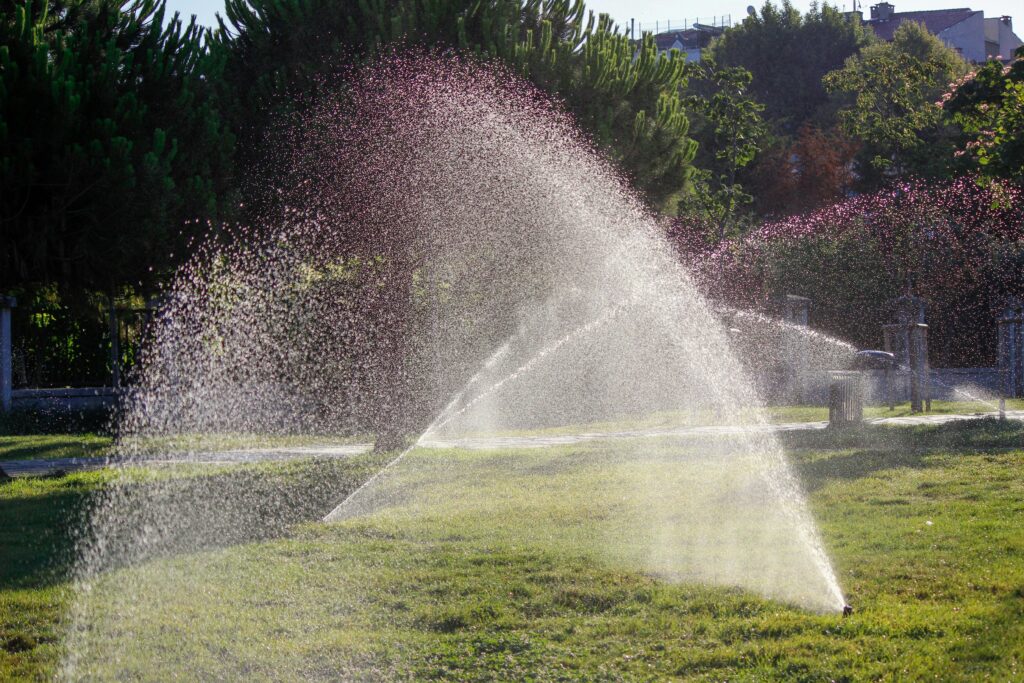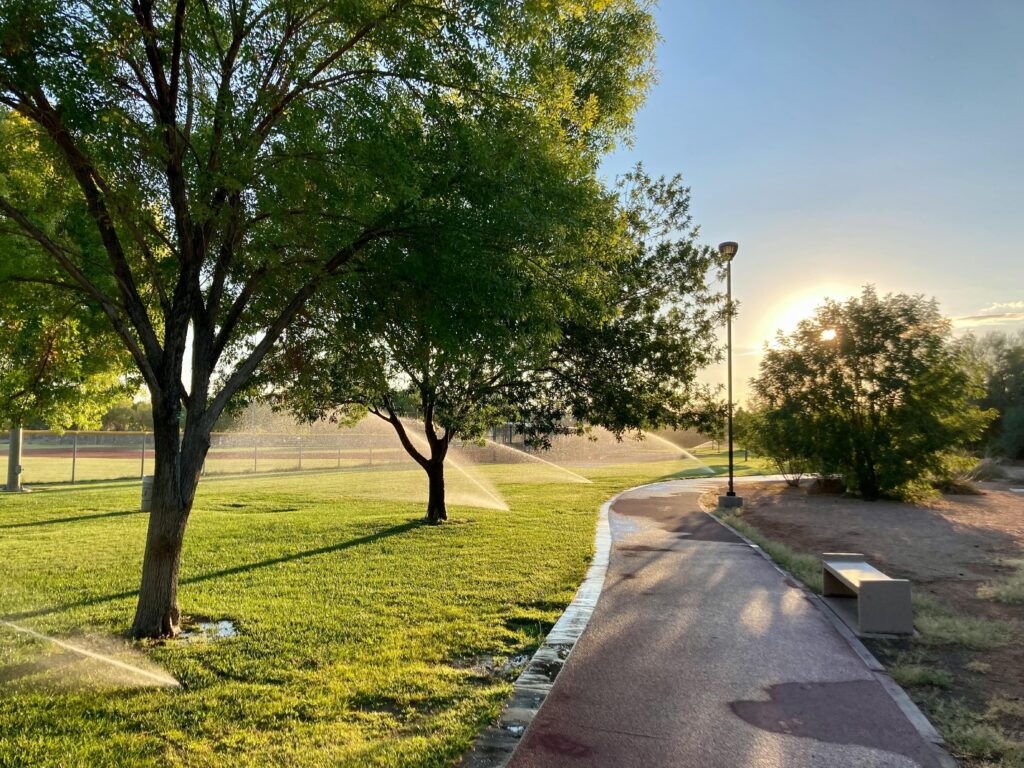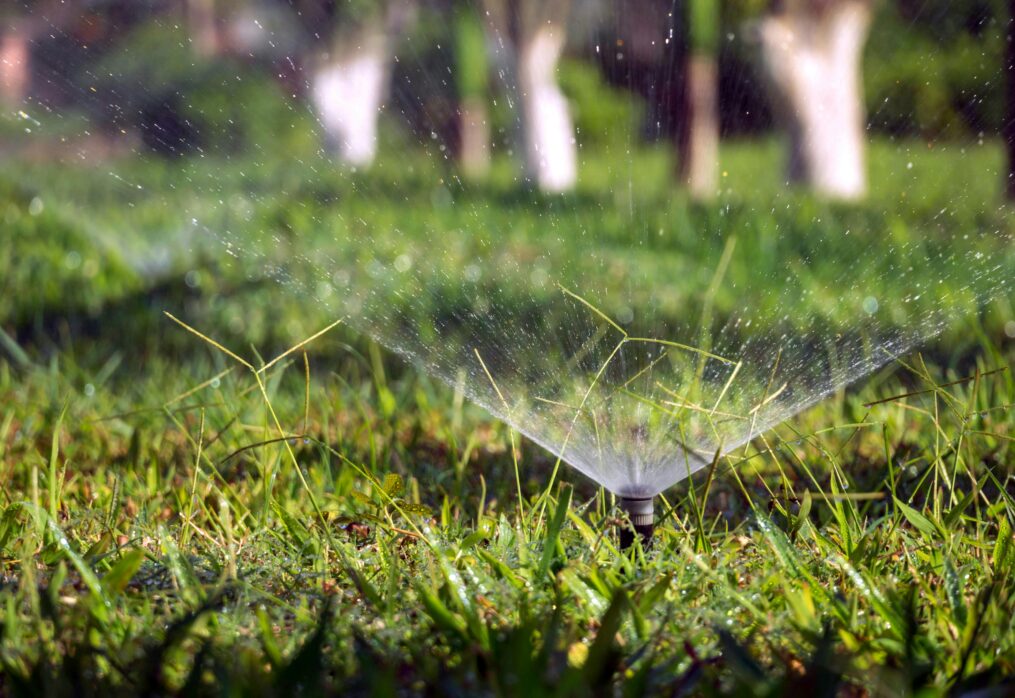When Is the Best Time to Water Your Grass?
Watering your lawn properly and at the appropriate times will make all the difference in having that lush, healthy, green lawn that you’ve always wanted. Thus, when is the ideal time to irrigate your lawn? ( When Is the Best Time to Water Your Grass? ) Understanding how much, when, and for how long to water your lawn is essential to a proper watering schedule. Fortunately, with our advice, you may have the best lawn on the block. The hours between five and nine in the morning, when there is less wind and evaporation, are ideal for watering your lawn. This makes it possible for water to seep into the ground and reach the roots.
Additionally, it lessens the chance of fungal disease by allowing the extra water that remains on the leaves to dry fast. The next best thing you can do to lessen the chance of evaporation is to water in the early evening, about six o’clock. However, watering at night allows the excess water to stay on the grass blades for hours without sun drying. This can result in a number of problems, including dollar spot, melting-out, and brown patch fungus. A drip irrigation system may help with evening watering. By specifically targeting the roots without coming into contact with the leaves, it reduces the risk of illness. Nonetheless, watering your lawn in the morning gives it the best chance to flourish and be healthy.
Pro tip: Aim to avoid watering your grass between the hours of 10 a.m. and 4 p.m. during the hotter months. During this time, the majority of the water will evaporate and not seep into the soil, squandering it and making your grass thirsty.

What is the ideal duration for watering grass?
Every time you water the grass, you should aim to collect half an inch of water, which usually takes around thirty minutes. Use the tuna can test to determine how long it takes your sprinklers to accumulate this amount:
Step 1: Use shallow containers, like empty tuna cans, to surround your yard.
Step 2: Set a 30-minute timer and turn on your sprinklers.
Step 3: Use a ruler to gauge how much water is in each can after 30 minutes. Determine the average water level in each container; this will be your sprinkler’s 30-minute supply of water.
Step 4: Adjust your watering schedule based on the results. You can water your grass for 30 minutes if each can hold about half an inch of water. You should run the sprinklers for a longer period if the average is less than half an inch. If there were more, you’d have to turn them off sooner.
How frequently should your lawn be watered?
Water your lawn two to three times a week for thirty minutes each time to achieve the ideal of one to one and a half inches of water, since it takes around thirty minutes to accumulate half an inch. At a depth of six to eight inches, the soil should be damp. Recall that precipitation from natural sources is included in the necessary water intake. You might not even need to water your grass once a week if you have frequent, strong rains. Pay attention to the weather and modify your watering plan accordingly. You must water your grass more deeply and less frequently. By encouraging the roots to look for moisture, this technique creates a strong, extensive root system. On the other hand, brief bursts of frequent watering encourage a weak, shallow root system that is incapable of withstanding dryness.

How to properly water your lawn
Remember these pointers to make the most of your irrigation time:
- Water is based on the ripeness of the grass.
- While newly planted grass needs more watering, established grass doesn’t. The germination period in a newly sown cool-season grass is five to ten days, during which the top 1.5 inches of soil should be kept wet but not waterlogged. Depending on the kind of warm-season grass you have, you might need to irrigate the newly planted seeds for as long as two or three weeks.
To avoid uprooting the seeds and overwatering your lawn, lightly sprinkle or spray fresh grass seeds once or twice a day. When watering, apply a gentle touch and maintain consistency.
Water based on the time of year
The season and the weather have an impact on how you water your lawn. For instance, you may need to water your grass less often during the rainy season in your area. You will need to water your lawn more often when there is drought. The amount of water your lawn needs is also dependent on the temperature. Because cool-season grasses cannot withstand high temperatures, they will become dormant in the summer unless they receive an abundance of water. However, regardless of the species of grass, you should water it less in the colder months of early spring and late fall, since less heat and sunlight equals less evaporation. You don’t want fungus to grow on your grass because of excessive watering.
Water based on the kind of soil
There are four types of soil: silt, sand, clay, and loam. All the varieties have distinct ways of holding and releasing water, but loam is the most balanced and healthy type, containing elements of all the other types. It’s commonly known that clay soils retain water—almost too effectively. This is due to the clay particles’ minuscule size, which creates a dense barrier that prevents water from escaping.
To avoid runoff and pooling, watering sessions should be shorter—about 15 minutes—and more frequent until you get 1 to 1.5 inches of water per week. This extends the time that the soil has to absorb the water. Because the particles in sandy soils are so large, they absorb water efficiently and drain rapidly. Apply 1 inch of water to sand-rich soil three times a week. You have to take extra care not to overwater silty soils since they are prone to erosion. They often drain slower than sandy soils, but better than clay soils in terms of water retention. Twice a week, apply 1 inch of water to silty soils. The drainage properties of sand and the water-retention properties of clay are combined in loamy soil. Loamy soil lawns require an inch of watering twice a week. Get a soil test from your local extension office if you’re unsure of the sort of soil you have. Your soil’s texture and recommended additives will be shown.
Expert advice: Insert the tip of a screwdriver into the soil to measure the moisture content. It should be able to readily pass through the first 6 to 8 inches of dirt. If the screwdriver has trouble passing through the soil, it is dry; therefore, you should modify your watering plan accordingly.
Buy Natural Grass Carpet Rolls online and get delivery within 1 day at your doorstep. Call 8766234417 / 9354173113 / 8588914985 to make a purchase today!
Water based on the type of grass
When deciding on the frequency and amount of watering your lawn, consider the type of grass you have. Regardless of whether your grass is cool- or warm-season, you must take into account its requirements. Usually, cool-season grasses need one to one and a half inches of water each week. Water at equal intervals three times a week. In the summer, they can require considerably more water to avoid dormancy. Typical varieties include some of the following:
- Kentucky’s bluegrass
- exquisite fescue
- Tall fescue
- Ryegrass that grows perennially
- Bentgrass
Generally speaking, warm-season grasses require 1 inch to 1/2 inch of water each week, which is less than cool-season grasses. Water one or two of the following varieties each week:
- Bermudagrass
- Augustinegrass St.
- zoysia grass
- Centipede grass
- Bahiagrass
- Buffalograss
Pro tip: Tall fescue, buffalo, centipede, and Bermuda are some of the drought-tolerant grass varieties.
Questions about lawn irrigation
Which irrigation system uses the least amount of water?
You may cut down on water waste considerably with the use of a drip irrigation system, you can significantly reduce water waste. Water is progressively distributed via these systems to the plant’s root zone, where it is most needed for the development of strong, deep roots. Adding an automated system can also reduce your water bill.
What additional measures may be taken to preserve water?
Effective methods to preserve the environment and save water include xeriscaping, planting groundcovers, creating artificial turf, building hardscapes, and landscaping with native plants. Every technique requires little to no irrigation and is low-maintenance.
For watering your grass, which sprinkler system works best?
It is not possible to use sprinklers in every situation. The size, shape, water pressure, and type of soil in your yard will all determine which sprinkler is best suited for it. To choose the appropriate sprinkler for your needs, read our page on the various varieties.
What time of year is ideal for watering other plants?
Whether you are watering a vegetable garden, flower bed, or container garden, the ideal time to water it is in the early morning, just as you would your lawn. When it comes to watering, garden plants, and grass have similar problems, such as water evaporation loss and fungal disease risk from over-irrigation.
Why is keeping an eye on my grass important?
To keep your lawn healthy, you must monitor it just like any other living thing. It’s time to adjust your watering plan if you discover symptoms of moss or algae or if your grass looks spongy, limp, yellow, or brown. After being mowed or trodden on, grass that has been submerged or overwatered recovers considerably more slowly. It’s better to follow your grass’s demands rather than watering it on a timetable with a fixed quantity. Change your strategy and give it another shot as soon as you see any indications of stress.
Engage an expert to assist Watering your grass properly takes dedication, time, and work. On a hot day, you’d rather be at the pool or beach than watering your lawn. To enable you to pursue your passions while maintaining the greatest-looking lawn on the block, we can put you in touch with a local lawn care expert to handle all of your lawn care requirements and expert guidance on When Is the Best Time to Water Your Grass?
I recommend checking out:
- How to Plant Lawn Grass: A Quick Guide
- Mowing Heights By Season And Grass Type
- Natural Weed and Grass Killer Recipe for a Chemical-Free Lawn
- What type of machine is used to cut grass?
- 5 gorgeous flowering plants to bring home in summer
- 10 Stress Relieving Indoor plants for home
- 10 plants you can easily grow in a bottle
- 5 Easy Tips to Maintain a Tulsi Plant at Home
- 5 Medicinal Plants to Grow at Home
- 10 palm plants to grow at home
Last Updated on 6 days ago by Anjali Mehra Ph.D. in Horticulture (Punjab Agricultural University)
- Best Lawn Grass for High-Footfall Religious Places in Punjab - December 29, 2025
- Why Lawn Grass Fails After Installation (Real Indian Case Studies) - December 25, 2025
- Nilgiri Grass vs Korean Grass – Price, Look & Maintenance Compared - December 23, 2025
